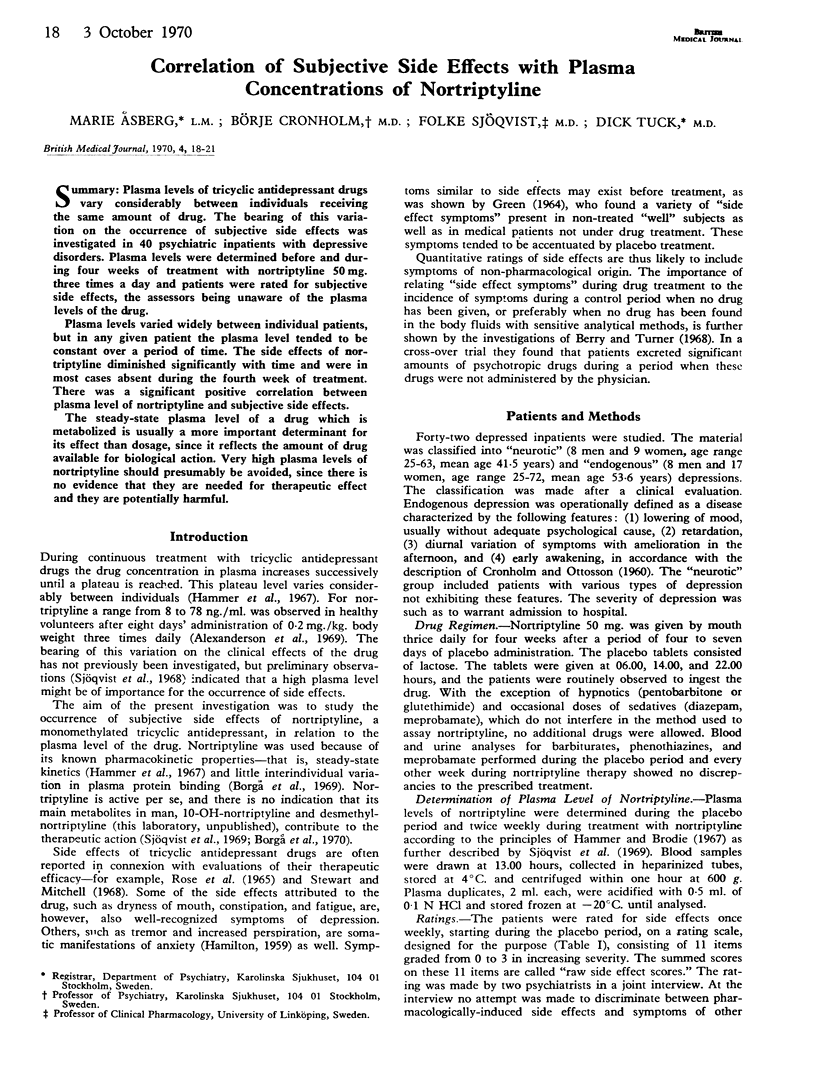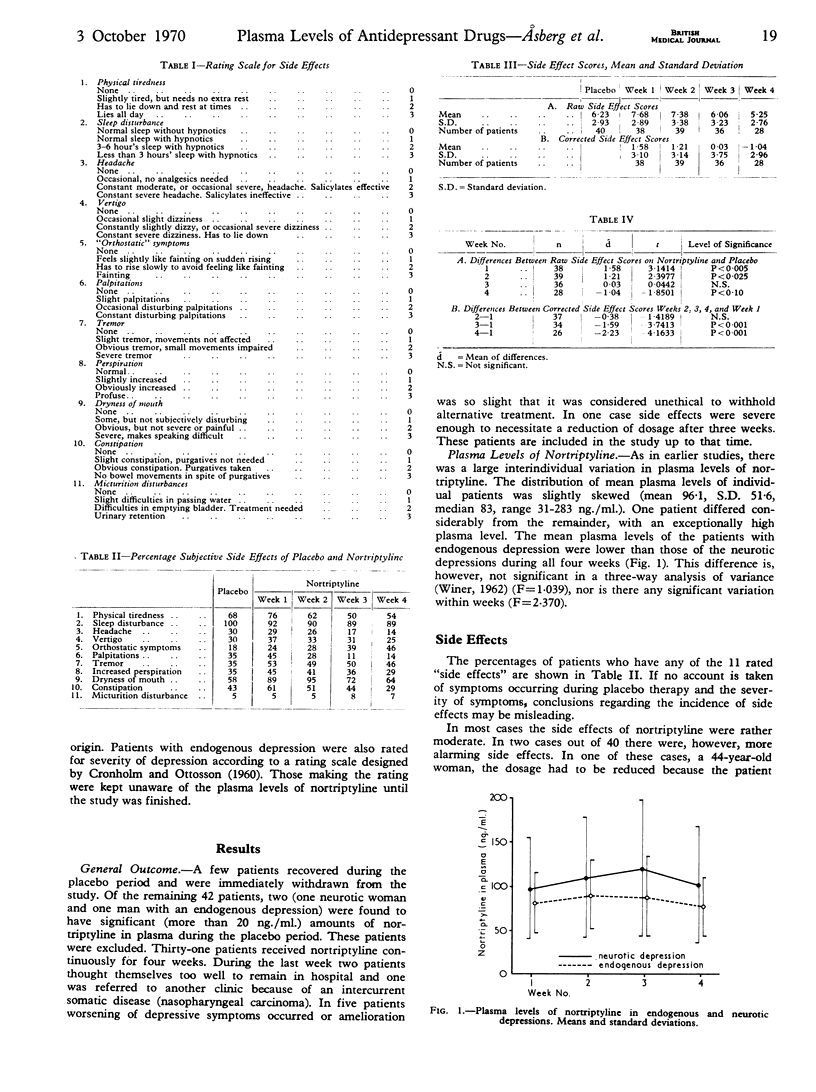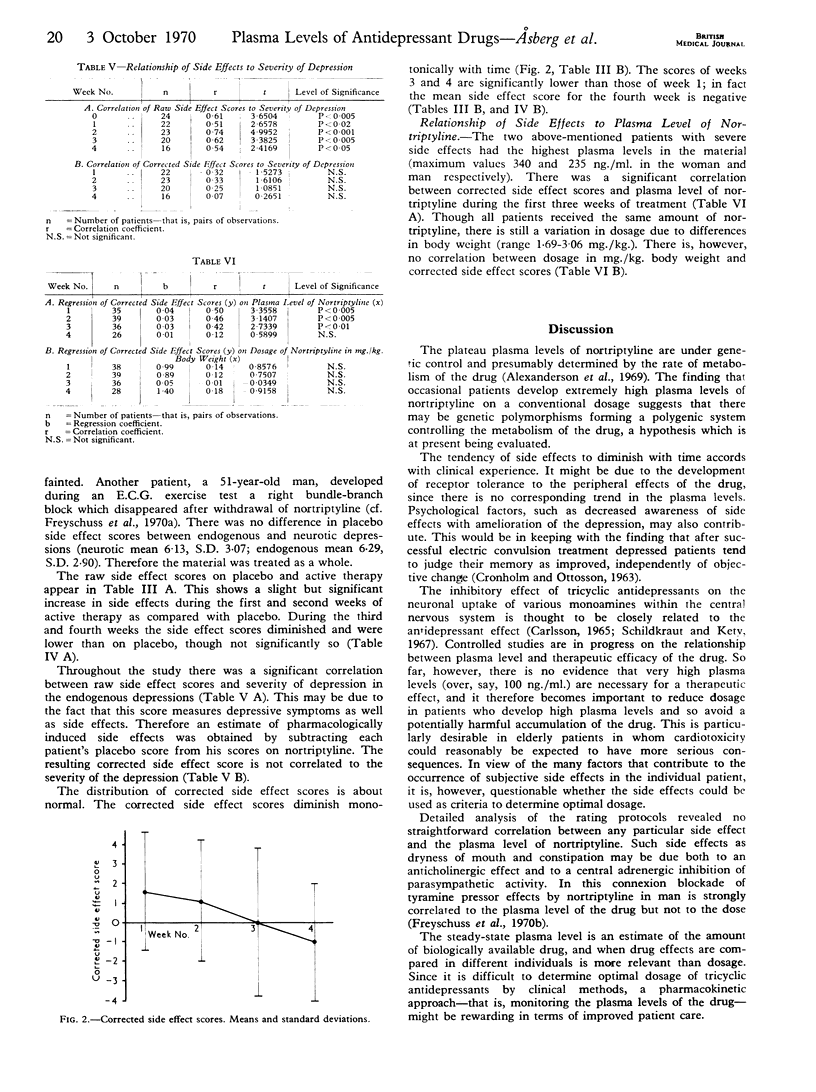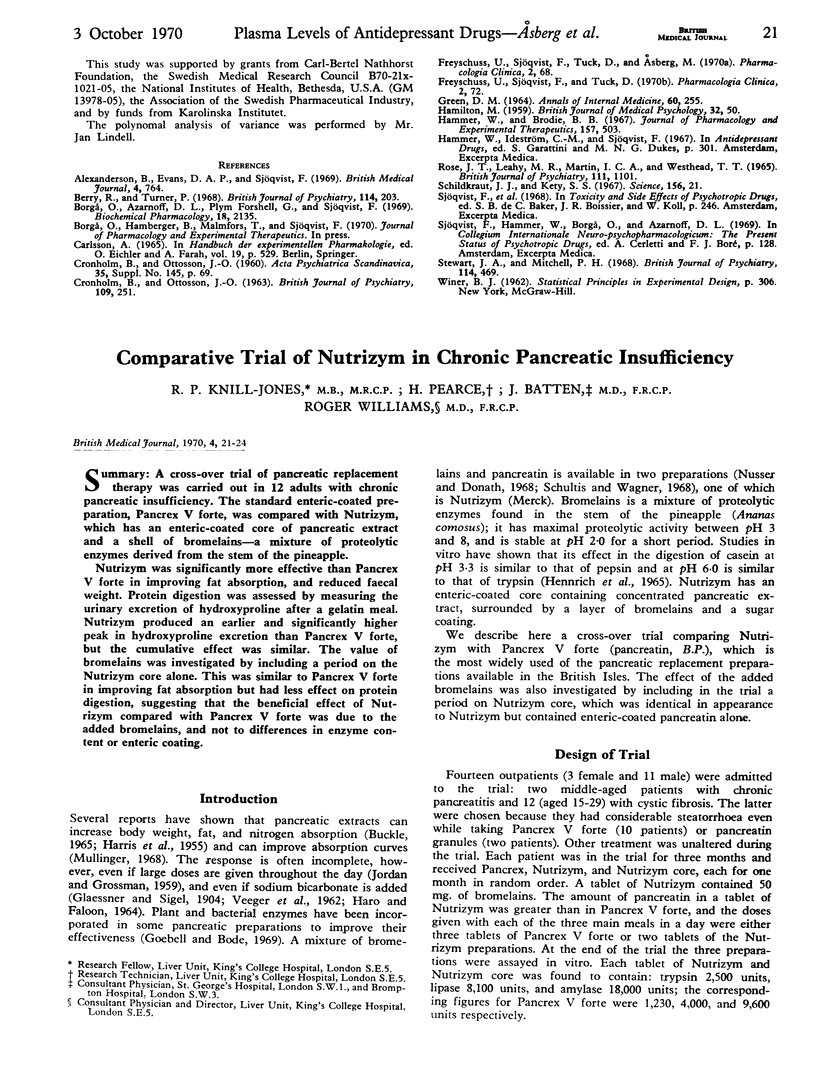Abstract
Plasma levels of tricyclic antidepressant drugs vary considerably between individuals receiving the same amount of drug. The bearing of this variation on the occurrence of subjective side effects was investigated in 40 psychiatric inpatients with depressive disorders. Plasma levels were determined before and during four weeks of treatment with nortriptyline 50 mg. three times a day and patients were rated for subjective side effects, the assessors being unaware of the plasma levels of the drug.
Plasma levels varied widely between individual patients, but in any given patient the plasma level tended to be constant over a period of time. The side effects of nortriptyline diminished significantly with time and were in most cases absent during the fourth week of treatment. There was a significant positive correlation between plasma level of nortriptyline and subjective side effects.
The steady-state plasma level of a drug which is metabolized is usually a more important determinant for its effect than dosage, since it reflects the amount of drug available for biological action. Very high plasma levels of nortriptyline should presumably be avoided, since there is no evidence that they are needed for therapeutic effect and they are potentially harmful.
Full text
PDF



Selected References
These references are in PubMed. This may not be the complete list of references from this article.
- Alexanderson B., Evans D. A., Sjöqvist F. Steady-state plasma levels of nortriptyline in twins: influence of genetic factors and drug therapy. Br Med J. 1969 Dec 27;4(5686):764–768. doi: 10.1136/bmj.4.5686.764. [DOI] [PMC free article] [PubMed] [Google Scholar]
- Berry R., Turner P. The pathology of a cross-over trial: (thiazesim--a new anti-depressant drug). Br J Psychiatry. 1968 Feb;114(507):203–206. doi: 10.1192/bjp.114.507.203. [DOI] [PubMed] [Google Scholar]
- Borgå O., Azarnoff D. L., Forshell G. P., Sjöqvist F. Plasma protein binding of tricyclic anti-depressants in man. Biochem Pharmacol. 1969 Sep;18(9):2135–2143. doi: 10.1016/0006-2952(69)90318-9. [DOI] [PubMed] [Google Scholar]
- CRONHOLM B., OTTOSSON J. O. The experience of memory function after electroconvulsive therapy. Br J Psychiatry. 1963 Mar;109:251–258. doi: 10.1192/bjp.109.459.251. [DOI] [PubMed] [Google Scholar]
- GREEN D. M. PRE-EXISTING CONDITIONS, PLACEBO REACTIONS, AND "SIDE EFFECTS". Ann Intern Med. 1964 Feb;60:255–265. doi: 10.7326/0003-4819-60-2-255. [DOI] [PubMed] [Google Scholar]
- HAMILTON M. The assessment of anxiety states by rating. Br J Med Psychol. 1959;32(1):50–55. doi: 10.1111/j.2044-8341.1959.tb00467.x. [DOI] [PubMed] [Google Scholar]
- Hammer W. M., Brodiet B. B. Application of isotope derivative technique to assay of secondary amines: estimation of desipramine by acetylation with H3-acetic anhydride. J Pharmacol Exp Ther. 1967 Sep;157(3):503–508. [PubMed] [Google Scholar]
- Rose J. T., Leahy M. R., Martin I. C., Westhead T. T. A comparison of nortriptyline and amitriptyline in depression. Br J Psychiatry. 1965 Nov;111(480):1101–1103. doi: 10.1192/bjp.111.480.1101. [DOI] [PubMed] [Google Scholar]
- Schildkraut J. J., Kety S. S. Biogenic amines and emotion. Science. 1967 Apr 7;156(3771):21–37. doi: 10.1126/science.156.3771.21. [DOI] [PubMed] [Google Scholar]
- Stewart J. A., Mitchell P. H. A comparative trial of desipramine and nortriptyline in depression. Br J Psychiatry. 1968 Apr;114(509):469–471. doi: 10.1192/bjp.114.509.469. [DOI] [PubMed] [Google Scholar]


